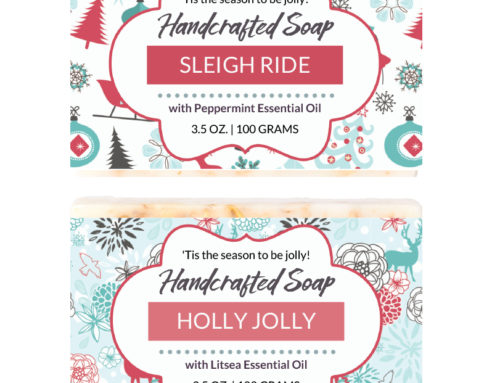Did you know that you can quantify a lifetime value to a customer?

Not only can we figure out the metrics of any particular customer’s economic value, doing this is perhaps the most significant measure to benchmark in all of business.
Why is this particular number so important? Mainly because it will give you an idea of how much repeat business you can expect from a particular customer, which in turn will help you decide how much you’re willing to spend to “buy” that customer for your business (through marketing, advertising and promotions).
Once you know how frequently a customer buys and how much he or she spends, you will better understand how to further market to them, and then see if their like-minded friends and cohorts (customer demographic data suggests that birds of a feather…) will jump on board.
The simplest way to estimate lifetime value: Plug actual or estimated (if you’re in the planning stages or just starting out) numbers into the following equation:
(Average Value of a Sale) x (Number of Repeat Transactions) x (Average Retention Time in Months or Years for a Typical Customer)
Let’s take an easy example. I spend $10 a month on Apple’s iTunes, which allows me to download and share an unlimited amount of music (or as much as my phone’s storage will allow). I have been doing this for about 2.5 years…let’s call it 30 months.
So, the equation to showcase my value as a customer to Apple is as follows:
$10 x 30 months = $300 in total revenue so far. If we simply look at one year’s worth of value, we see that it is $120 total ($10 x 12 months = $120).
Here is the kicker. If you–the wonderful person reading this right now–were to go attempt to sign up for an Apple iTunes account right now, I am more than willing to bet that they might offer some kind of deal, like getting your first 3 months for free or something like that. You see, Apple knows that as long as they spend less than $120 to acquire your signing up for a subscription, then you will prove to be profitable in a very short amount of time for them! Taking $30 off (the first 3 months) is no big deal, as they are still getting $90 from you in a year’s time.
Do you see how simple of a concept that is to creating and sustaining value?!
 Want more from Benjamin? Check out his books on Amazon.com!
Want more from Benjamin? Check out his books on Amazon.com!
Let’s take a more direct example and approach to this concept. Let’s talk about lifetime customer value for your soap and skin care company.
Let’s say you run an email newsletter campaign, with the help of service providers such as MailChimp, AWeber or Constant Contact.
Now let’s say, thanks to data tracking, you see that one particular customer, let’s call him Bernie, has purchased from you nearly every time you run a newsletter campaign for the last year. Here is the break down of his purchases:
- January 11th: $54.78
- February 18th: $19.33
- March 5th: $31.45
- March 30th: $37.87
- May 5th: $18.73
- June 13th: $24.64
- September 4th: $30.88
- November 25th: $68.25
- December 10th: $91.35
Total Sales from Bernie in one calendar year: $377.28
The first thing you do is find out who Bernie is and why he is buying from you. How do you do this? By asking him!
- How did you find out about us?
- Why do you like our products?
- Which is your favorite?
- Would you refer us to others?
Call or email Bernie and say hello! Tell him how grateful you are for his patronage! Ask him about himself, and write everything down. By doing this, you would be conducting hands-on market research. You see, Bernie is part of a demographic. And demographics suggest that birds of a feather flock together. All you have to do is find out who Bernie hangs out with, where he hangs out, what he’s in to, what he’s not into, his interests, hobbies, etc.
Get to know Bernie, as success always leaves clues.
Once you find some more information about Bernie, you can start another email marketing campaign that will cater to more people in your email list like Bernie.
Numbers Don’t Lie
What if, over time, you grew your email newsletter list of people to 8,000. And of that 8,000, you had 750 Bernie-types.
And of the 750 Bernie types, about 60% of them purchased from you every time you ran a newsletter campaign. That would be 450 Bernie-type customers.
Now, since we conducted a Lifetime Customer Value on Bernie, we know that he has a Lifetime Value of $377.28 per year. And now you have 450 loyal Bernies in your email list. Thus, you can more or less count on 450 Bernies purchasing at a rate of $377.28 per year, which totals $169,776…and that is just from 450 people out of 8,000 in your list (more would surely purchase).
Sound too good to be true?
It’s not. All you have to do is start tracking your online sales to find the standouts, and then voraciously market to that demographic, and keep growing your email list. Find out your best customer’s lifetime value and then cater your marketing efforts to that type of person, over and over and over again.
Furthermore, you know that you can pique the interest of other Bernies out there–who aren’t yet your customer–by offering giveaways, promotions and deals. Providing free opt-ins and promotions costs you money, but you also have a pretty good idea that if you are marketing to the right person (which you are, Bernie), then the return will be worth it. Much like Apple offering $30 off a year’s worth of music ($120 value), you can offer a substantial amount off to a potential Bernie, as you know that he is more than willing to spend over $300 with you in a year’s time. How do you know this? Because you tracked your customer data and performed the equation above. Then, you voraciously searched out other like-minded individuals (through the power of demographics, you found as many Bernies as you could) and offered them an opt-in that they couldn’t refuse.
The Rundown:
- First off, start an email list. Through newsletter sign-up opt-ins and the like, start compiling a newsletter list.
- Second, watch your sales like a hawk. If you start seeing repeat customers in your online sales, make a list in an excel sheet or on paper of the best of the best.
- Over time, let’s say 6 months to a year, perform the Lifetime Value equation to see what they are worth to your company.
- Then, find out who these folks are, which will open the door to finding more people like them.
- Then, create enticing opt-in deals for these specific, targeted individuals to purchase from you for the first time.
- Then, you’ll have them hooked.
Repeat all steps until you are rolling around in cash.
~ Benjamin






Great information! What about for small businesses that don’t have a mail campaign? Any advice for attracting business without it?